I love to grow my own food. And what I love most about planting, harvesting, and cooking all that food is knowing every vegetable that lands on my plate has a story behind it. The lettuce that started from a speck of seed and turned into a season of salads. The squash that survived a bout of powdery mildew and grew into an armful of beautiful butternuts. The artichoke that stood alone in the first year and eventually divided into a dozen more plants.
But beyond those stories that started in my garden are the ones that go back a hundred or even a thousand years when you hold a packet of heirloom seeds in your hands.
What is an heirloom? The word denotes something of value, whether monetary or sentimental, handed down from generation to generation. If your house caught on fire, what would you pack up? Perhaps family albums, works of art, or antique jewelry. Your ancestors, on the other hand, probably would have saved their seeds. And that’s one of the most intriguing things about heirloom seeds.
Imagine a variety of fruit or vegetable that was so important to your family history or homeland that you would bring it with you when you immigrated to the New World. Such is the case with Old Greek Melons, which were introduced in the early 20th century when Greek immigrants settled in Utah for mining jobs. Or Hutterite Soup Bush Beans, which arrived in North America in the 1870s when Hutterite Christians fled persecution in Europe.
Then there are the heirlooms that have been grown, saved, and passed down through several generations of the same family, like Bedwell’s Supreme White Dent Corn, which was originally cultivated in Clarke County, Alabama, and preserved by the Bedwell family for at least a century. Or Missouri Pink Love Apple Tomatoes, which have survived since the Civil War. The Barnes family grew these tomatoes as an ornamental, believing (as many people did at the time) that tomatoes (or “love apples”) were poisonous. Of course, we now know that isn’t true.
Read more: The 30 Best Tasting Heirloom Tomato Varieties (By Color!)
Some heirlooms are named after the people, places, or events that they’ve become synonymous with. There are the tragic stories, like the Cherokee Trail of Tears Pole Bean. Without knowing any of its history, you’d likely guess there was a lot of pain and suffering — and there was.
The Trail of Tears left thousands of Cherokee Indians stricken with disease, exposure, starvation, and death as they were relocated from their tribal lands and forced to march through the Smoky Mountains to the Indian Territory in present-day Oklahoma. One of the precious possessions they carried with them to their new home was this prolific pole bean variety, a slender green pod yielding shiny, jet black beans.
Other stories, however, are more hopeful, like that of the Mortgage Lifter Tomato. In the 1930s, MC “Radiator Charlie” Byles was a radiator repairman in Logan, West Virginia, as well as an amateur tomato breeder. He decided that he wanted to build a better tomato, a large and meaty variety that could feed families.
The famous tomato was bred by crossing four of the biggest tomato varieties he could find: German Johnson, Beefsteak, an unknown Italian variety, and an unknown English variety. He selected and cross-pollinated his strongest plants for six years before he finally stabilized the new breed and developed his dream tomato.
People would drive hundreds of miles to buy his tomatoes, which sometimes weighed up to 4 pounds each! By selling his seedlings for $1 (a rather hefty sum in those days for a little plant), Radiator Charlie was able to pay off his $6,000 mortgage in six years. (Here’s an interesting radio segment about the history of the Mortgage Lifter.)
There are also stories that harken back to a page in American history we would never learn from our history books otherwise, like the Fish Pepper and its significance in the African-American community in the late 1800s. Or the varieties that come to us by chance from other cultures, like the Fife Creek Cowhorn Okra, an heirloom that has been in the Fife family since the 1900s. It was believed to have been given to them by a Creek Indian woman who stayed with the family for a year in Jackson, Mississippi.
Seeds also come to us by way of explorers, like Sir Joseph Dalton Hooker, a renowned British botanist (and Charles Darwin’s closest friend) who discovered the Sikkim Cucumber in the Eastern Himalaya in 1848. Calling the cucumber “Sikkim,” after the Indian state where he found it growing, Hooker wrote in one of his texts, “So abundant were the fruits, that for days together I saw gnawed fruits lying by the natives’ paths by the thousands, and every man, woman and child seemed engaged throughout the day in devouring them.”
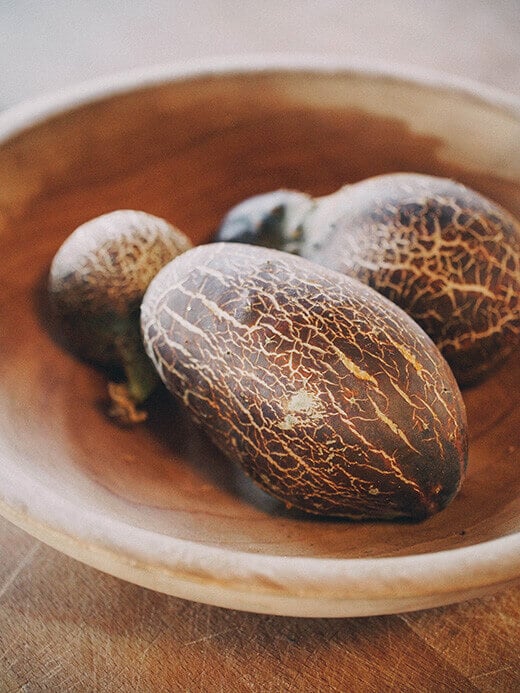
With the season of seed catalogs in full swing, I can’t help but bury myself in all those pages filled with wonderful pictures of beautiful old varieties from all over the world. One of my favorite catalogs is the behemoth from Baker Creek Heirloom Seeds. Over 350 pages! I may be a little biased here — I wrote two articles for The Whole Seed Catalog, which is a special edition of their annual catalog that’s part seed catalog, part magazine. (You can buy a copy on their website, at your local newsstand, or from Whole Foods Market.)
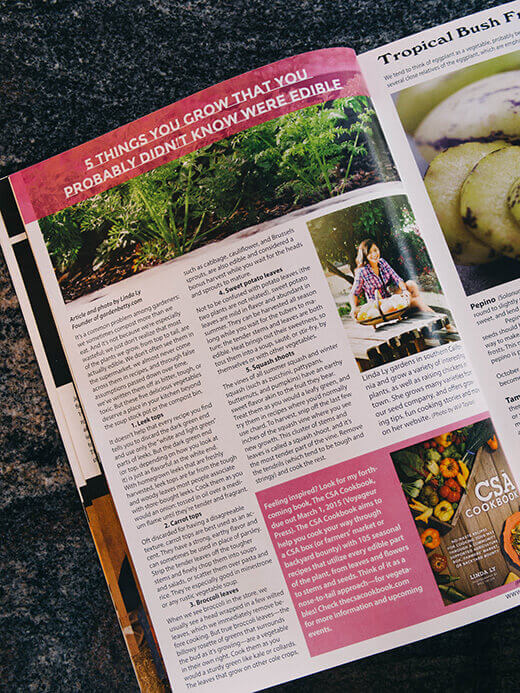
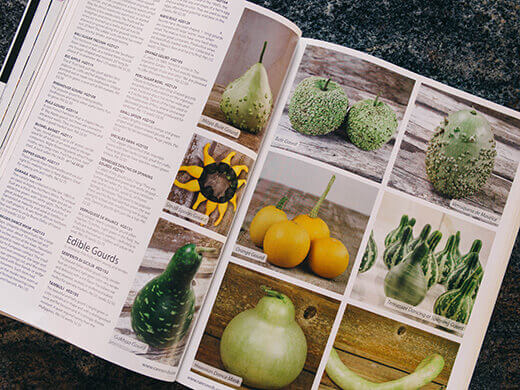
It’s where I learned about the Crapaudine, believed to be the oldest beet still in existence and dating back 1,000 years. It certainly looks like no beet I’ve ever seen in a market; the roots are carrot-shaped with dark, rough skin resembling tree bark. I grow this variety almost every year and it serves up some of the sweetest flesh I’ve tasted in a beet.

It’s also where I became fascinated with the history of heirloom seeds. A lot of the descriptions read like little history lessons. Many of them traveled thousands of miles before they were brought into mainstream seed collecting, and some of them are listed in Slow Food’s Ark of Taste, a database of heritage foods at risk of extinction.
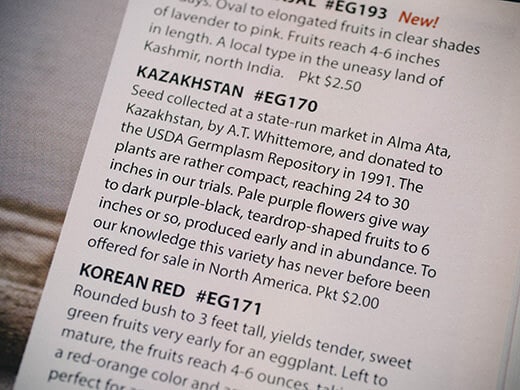
I love weaving all that history together with mine when I make a meal with food I’ve grown myself from seeds I’ve saved and sowed for years. I love knowing that the memories made from that food add to the stories behind those seeds, even if the only people to ever know those stories are the ones I’ve shared my meal with.
Though I often order from Baker Creek, there are many other small seed houses that do wonderful work in preserving old varieties and keeping them free from genetic modification. Sadly, their numbers are far below the thousands of seed catalog companies that used to exist between the 1880s and the First World War, a period known as the golden era of seed catalogs and hand illustrations.
I encourage you to support a local seed library or seed supplier this year. Here are a few that specialize in heirlooms:
- High Mowing Organic Seeds
- The Living Seed Company
- Salt Spring Seeds (Canada)
- Seed Savers Exchange
- Southern Exposure Seed Exchange
- Sustainable Seed Company
- Terroir Seeds
- TomatoFest
- Victory Seed Company


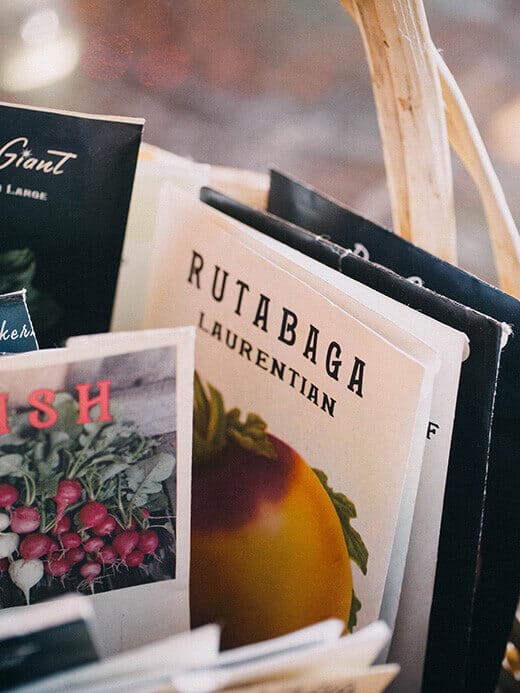













Most of the links on this page do not work. Would love to learn more about old-greek-melon, hutterite-soup-bush-beans, trail-of-tears, sikkim cucumber – can you please fix? I’ve just started looking into growing my own garden along with tying it into stories for a class I would like to teach children. Thanks for help! Blessings
fantastic thank you
RT @theGardenBetty: The Stories Behind Heirloom Seeds http://t.co/JI01zKDS94 < TY for RT! @SalisburyLand @SimplyTreesUT @AgroBioDiverse @_G…
The Stories Behind Heirloom Seeds http://t.co/JI01zKDS94 < TY for RT! @SalisburyLand @SimplyTreesUT @AgroBioDiverse @_GardenDesigner
RT @rareseeds: Check out @theGardenBetty awesome write-up on #HeirloomSeeds http://t.co/HEdBJTgMnt #RareSeedsRock
RT @theGardenBetty: Embrace Old World varieties that have been handed down for generations. The Stories Behind Heirloom Seeds http://t.co/u…
RT @theGardenBetty: Embrace Old World varieties that have been handed down for generations. The Stories Behind Heirloom Seeds http://t.co/u…
RT @theGardenBetty: Embrace Old World varieties that have been handed down for generations. The Stories Behind Heirloom Seeds http://t.co/u…
Embrace Old World varieties that have been handed down for generations. The Stories Behind Heirloom Seeds http://t.co/uK8edTkQVL #gardenchat
This is an interesting little article about heirloom seeds. We are so happy that our two seed vendors (Renee’s… http://t.co/ek6td3medO
Don’t romanticize too much.
What one grew 100 or even 50 years ago is not likely the same as what is grown today for the same name. A very interesting plant breeder named Frank Morgan (Wild Garden Seed in Oregon) speaks about this in several youtube posts.
Genetics are not always as stable as some think. Artificial human selection, environmental differences, improper population size, transposable elements, epigenetic issues and random mutations are but some of the factors that effect change in varieties over time.
In addition, without good provenance, some claims of history made are not supported by the genomic evidence. An example comes from “Black” tomatoes and their subsequent alleles as a good example. Barry and Pandey in Molecular Genetics(2009) pointed out how the lineage of such tomatoes were not supported by the genetic evidence suggesting histories and origins were being exploited for marketing purposes. Due to the nature of the specific gene and it’s subsequent mutant alleles, it’s not likely they came from “Cherokee Indians” or that they had been grown in Baltic regions for all that long (the genes for “black/purple” where likely introduced by plant breeders sharing material in the mid 20th century to areas of Eastern Europe/Russia).
Remember that it does not take long to change or distort a story either accidentally or intentionally with only a few generations. Think of the child’s game often called “Chinese telephone” whereas one person starts with a statement and whispers it to the person next to them and so on. It does not take long for the original message to get distorted.
Such that the seed saved by someone’s great grandparent (who came from Italy) but obtained from a US seed company when living here in the USA took on a life (and name) of it’s own. Family/friends remember it as “what Luigi/Dad/Grandpa grew”. But things happen. Things get added on to the history or assumed since he was from Italy and now the story gets embellished and assumed that he brought it from “the old country”. Soon it becomes “line x from Italy that the family always grew”.
It doesn’t mean the lines aren’t good but it also means they aren’t necessarily what they say they are. It also goes to so how they may not be as genetically diverse as some think. There is probably much “repeating” of the same lines out there. Most complain about the “loss of diversity” but do not understand that though specific varieties may be lost, the genomic diversity that made them is still around. Rather than use that, they romanticize the “heirlooms” (which may be phenotypically diverse but are not as truly genetically diverse – ie they look different but really don’t have a wide difference in all their genes, because one does not always “see” what genes do). The only way to keep that diversity is to keep incorporating it. Edward Lee said ” Tradition isnt stagnant, it isn’t meant to be. We have to change. We have to adapt.”
Personally I’ve always thought Mark Twain should have written heirloom histories. It would likely be about as factual and certainly interesting.
Varieties go through natural changes all the time, and I’ve never heard of a gardener insisting that what he grows today is the exact same plant that his grandfather grew. Nor are the seeds that a farmer grows one year the same as the seeds he grows next year for the same variety. Even if we don’t intend to, we unwittingly do our own breeding and selection process when we thin out seedlings and grow only the strongest ones. Varieties become adapted to certain climates, look differently in some, taste sweeter in others. It’s a given in gardening.
As for stories, I’m sure many have been lost in translation over the generations. But that is why they’re called stories. While the details may be debatable, they don’t diminish the fact that there’s still history behind those varieties. And any history, even within the most well researched works, is at the mercy of individual perspective and human memory.
RT @TheGardenChat: RT @theGardenBetty: That packet of seeds could be holding a variety over 300 years old. http://t.co/KXAoMfRN2H #gardenc…
RT @TheGardenChat: RT @theGardenBetty: That packet of seeds could be holding a variety over 300 years old. http://t.co/KXAoMfRN2H #gardenc…
RT @theGardenBetty: That packet of seeds could be holding a variety over 300 years old. http://t.co/KXAoMfRN2H #gardenchat
Awesome post from one of my favorite garden blogs- http://t.co/1M51o5zEcZ
The best part of growing heirlooms is learning about their histories. The Stories Behind Heirloom Seeds http://t.co/DpJ02ENnKz #gardenchat
RT @MGFsite: With the season of #seed catalogs in full swing @TheGardenBetty has her picks already! What are yours? http://t.co/Gx8PGI2K0A …
With the season of #seed catalogs in full swing @TheGardenBetty has her picks already! What are yours? http://t.co/Gx8PGI2K0A #Gardening
That packet of seeds could be holding a variety over 300 years old. The Stories Behind Heirloom Seeds http://t.co/98KgIPQ1b8 #gardenchat
RT @theGardenBetty: What makes seeds from @rareseeds and other seed catalogs so special: The Stories Behind Heirloom Seeds http://t.co/RQJn…
RT @theGardenBetty: What makes seeds from @rareseeds and other seed catalogs so special: The Stories Behind Heirloom Seeds http://t.co/RQJn…
RT @theGardenBetty: What makes seeds from @rareseeds and other seed catalogs so special: The Stories Behind Heirloom Seeds http://t.co/RQJn…
RT @theGardenBetty: What makes seeds from @rareseeds and other seed catalogs so special: The Stories Behind Heirloom Seeds http://t.co/RQJn…
RT @TheGardenChat: RT @theGardenBetty: What makes seeds from @rareseeds and other seed catalogs so special: Heirloom Seeds http://t.co/MBQ…
RT @TheGardenChat: RT @theGardenBetty: What makes seeds from @rareseeds and other seed catalogs so special: Heirloom Seeds http://t.co/MBQ…
This is one of the best blog posts I’ve ever read. I love watching a seed turn into a plant that produces fruit that contains even more seeds. Now I get to enjoy this process through the lens of the story behind the seeds. I can’t wait to buy seeds with a story. Growing my food will never be the same.
So happy you enjoyed this! I love to think that in the long lineage of that one variety I’m growing, my soul is one small part of it. 🙂
RT @TheGardenChat: RT @theGardenBetty: What makes seeds from @rareseeds and other seed catalogs so special: Heirloom Seeds http://t.co/MBQ…
RT @theGardenBetty: What makes seeds from @rareseeds and other seed catalogs so special: Heirloom Seeds http://t.co/MBQrvYd9rI #gardenchat
RT @theGardenBetty: What makes seeds from @rareseeds and other seed catalogs so special: The Stories Behind Heirloom Seeds http://t.co/RQJn…
What makes seeds from @rareseeds and other seed catalogs so special: The Stories Behind Heirloom Seeds http://t.co/RQJnfbApnQ #gardenchat
RT @theGardenBetty: It’s the season of seed catalogs. What will you be ordering this year? The Stories Behind Heirloom Seeds http://t.co/JI…
RT @theGardenBetty: It’s the season of seed catalogs. What will you be ordering this year? The Stories Behind Heirloom Seeds http://t.co/JI…
It’s the season of seed catalogs. What will you be ordering this year? The Stories Behind Heirloom Seeds http://t.co/JI01zKDS94 #gardenchat
RT @theGardenBetty: Blogged on Garden Betty: The Stories Behind Heirloom Seeds http://t.co/gDKBXyo6It
RT @rareseeds: Check out @theGardenBetty awesome write-up on #HeirloomSeeds http://t.co/KGERty9hEo #RareSeedsRock
RT @theGardenBetty: Blogged on Garden Betty: The Stories Behind Heirloom Seeds http://t.co/gDKBXyo6It
Check out @theGardenBetty awesome write-up on #HeirloomSeeds http://t.co/KGERty9hEo #RareSeedsRock
Yep, yep and yep! My feelings exactly. As I feel about my love for family history, the stories put the meat on the bones. Thanks, Linda, for your list of other favorite seed houses. Always on the lookout for new resources and do appreciate this! Happy hunting!!! 🙂
Hope you discover some wonderful new seeds this year!
Blogged on Garden Betty: The Stories Behind Heirloom Seeds http://t.co/gDKBXyo6It